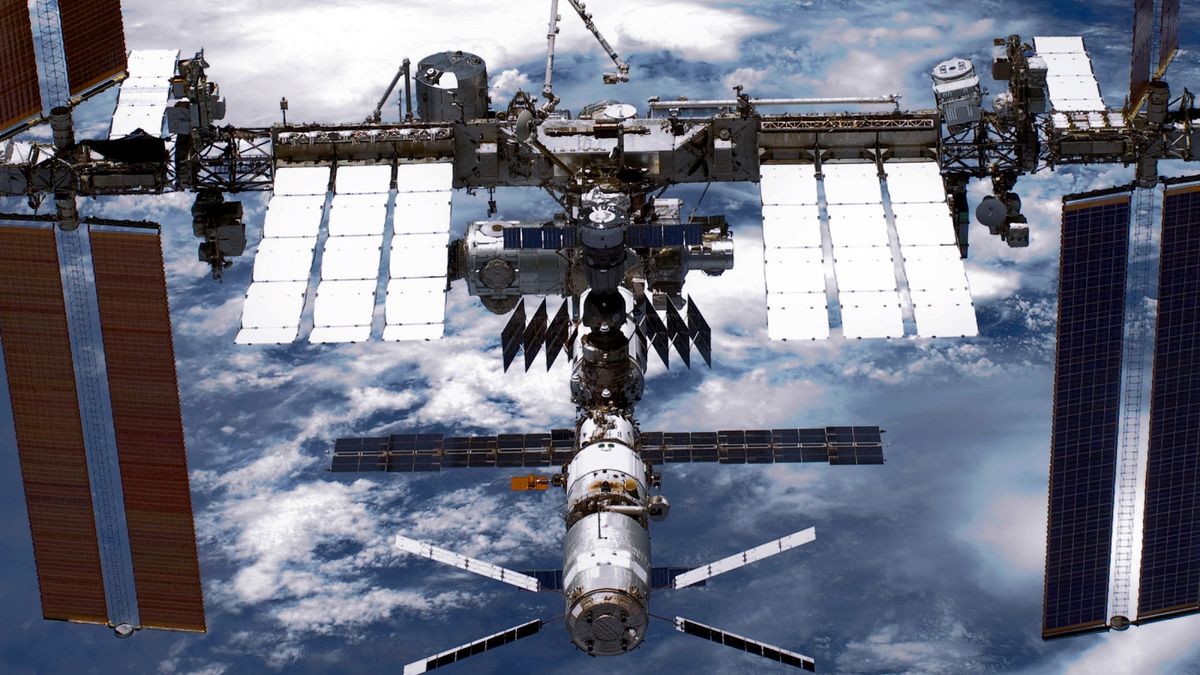Antimatter particles found on the International Space Station (ISS) may be evidence of unknown physics, new research suggests.
The particles, the antimatter versions of helium nuclei, may have been produced by cosmic fireballs, – and physicists cannot explain how the fireballs were made using them. Typical Examplea theory that describes the zoo of subatomic particles.
All elementary particles have corresponding antiparticles with opposite electrical charges, which cancel each other out when they collide. The theory suggests that half of the matter in the universe should have been antimatter, which means that the universe would have died out soon after the Big Bang.
However, antimatter in the universe is rare and fleeting. Although particle accelerators can produce antiparticles by collisions between protons and electrons, and special detectors detect antiparticles from high-energy collisions, such as those from Supernova explosions usually produce only single antiparticles such as positrons (antielectrons) and antiprotons.
Related: Mysterious ‘particleless’ particles may be tearing apart the universe, new study suggests
However, about eight years ago, the Alpha Magnetic Spectrometer (AMS-02) aboard the ISS detected about 10 antihelium nuclei. These nuclei contained two antiprotons and one or two antineutrons (for versions antihelium-3 and antihelium-4, respectively). If confirmed with further testing, the discovery would challenge the Standard Model of particle physics
According to the Standard Model, making antihelium-4 requires at least three or four antiprotons and antineutrons to be close enough and moving slowly enough to stick together. Michael A. Fedderke, a postdoctoral researcher at the Perimeter Center for Theoretical Physics in Canada, told Live Science in an email. According to these requirements, one antihelium-4 would be produced for every 10,000 antihelium-3s.
“The most interesting thing about the AMS-02 candidate events is that the data seems to be consistent with one antihelium-4 event for two to three antihelium-3 events,” Fedderke said. .
In a new study, published on June 21 in the journal Physical Examination D, the team tried to explain this difference using imaginary objects called fireballs. These fireballs can be caused by invisible events, such as the collision of very dense clusters. dark matter – a mysterious substance that makes up 80% of the universe but does not interact with light so much that it cannot be seen directly.
“A fireball is a dense, energetic sphere with many antiparticles,” study co-author. Anubhav Mathur, a doctoral student at Johns Hopkins University, told Live Science. Once created, it expands near the speed of light, releasing antiprotons, antiutrons and antihelium into the surrounding environment. After that, the antinuclei go outward, and some of them reach Earth where they can be found.”
The researchers modeled fireballs of different sizes and behaviors. They found that if the fireballs were large, “composite objects” made up of many dark particles, then the number of antihelium nuclei they produced matched the previous results obtained in a ISS, Fedderke said.
Although these findings are promising, they are still preliminary and require further validation. The following studies will help determine whether their views are correct.
“On the cautionary side, we look forward to AMS-02 completing their analysis of the antihelium event, as well as taking additional data in the future that may shed more light on this game,” Fedderke said.
The General AntiParticle Spectrometer (GAPS) project, which will launch a balloon over Antarctica later this year to detect antimatter cosmic rays, including antihelium nuclei, could also shed light on the issue, Fedderke added.
#Antimatter #discovered #International #Space #Station #reveal #physics

